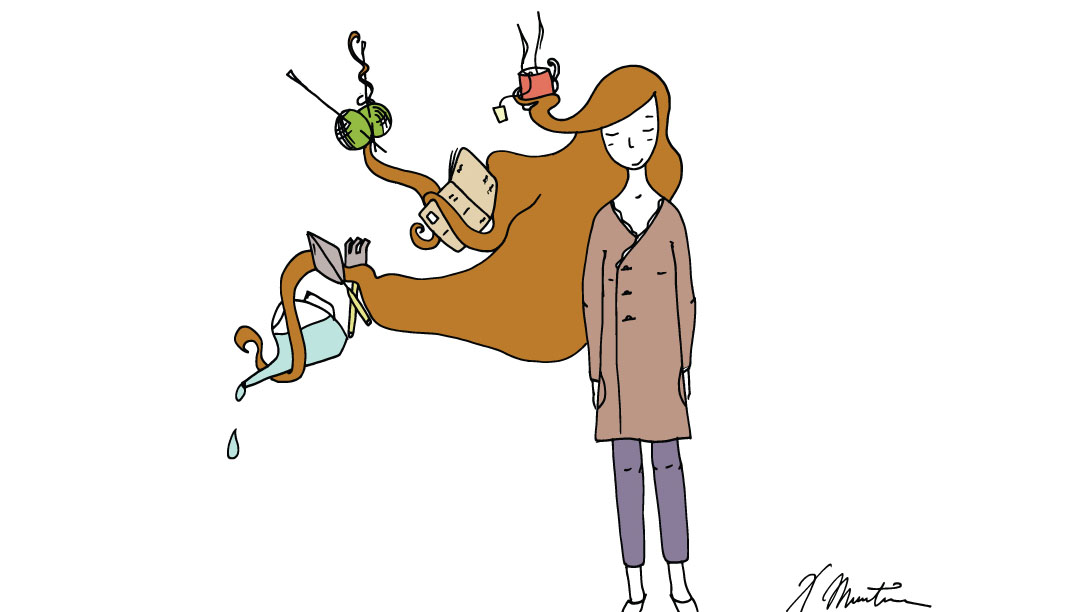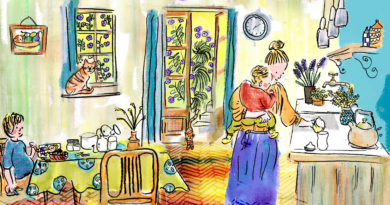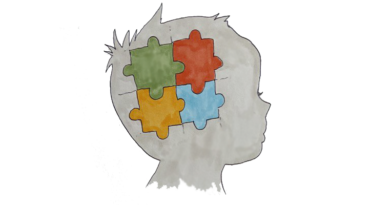Breastfeeding Rituals that Become Lasting Traditions
 During the season of Christmas and Hanukkah, we become more aware of rituals and traditions. Rituals are specific actions where each step follows automatically after the first, and they usually have a deep cultural meaning. From these rituals arise traditions: the things that we pass on to our children, as our ancestors passed them onto us. And these, of course, are related to our cultural backgrounds but are always taking new form, shaped by both the rituals and traditions of the countries we live in and the rituals and traditions of the cultures we come from. Traditions bring us a feeling of belonging, of community, and a sense of security and ease, because we know exactly what to do, what to say, and what is expected of us.
During the season of Christmas and Hanukkah, we become more aware of rituals and traditions. Rituals are specific actions where each step follows automatically after the first, and they usually have a deep cultural meaning. From these rituals arise traditions: the things that we pass on to our children, as our ancestors passed them onto us. And these, of course, are related to our cultural backgrounds but are always taking new form, shaped by both the rituals and traditions of the countries we live in and the rituals and traditions of the cultures we come from. Traditions bring us a feeling of belonging, of community, and a sense of security and ease, because we know exactly what to do, what to say, and what is expected of us.
In this column, we will look at some traditions and rituals surrounding breastfeeding; ones that are helpful and also ones that are less so.
With the onset of industrialisation and hospital birth, the lives of mothers and babies changed drastically. The physiology of birth and breastfeeding seemed to have been forgotten and mechanical ways, very helpful for manufacturing, found their way into the lives of mothers and babies. The rituals that prevailed at that time were such that mothers and babies were separated immediately after birth and the babies were kept in central nurseries, brought out at specific times – every four hours, not during the night, though – for breastfeeding. The mothers had to “sanitise” not only their hands but also their nipples, and the babies were weighed by the nurses before they were put at the breast, were allowed to suckle for a period of about ten to fifteen minutes, and then were taken off the breast and weighed again to calculate how much milk they had drunk. Needless to say, very few of these babies had managed to drink the required amount of mother’s milk within this short time and so they were ‘topped up’ with formula once back at the nursery. The second breast was given four hours later, after it had had time ’to fill up’, a misconception of the times and, sadly, still believed by many today. Under these conditions, very few mothers succeeded with breastfeeding, and if one did it was usually a second or third time mother, who defied the hospital rules and routines in favour of listening to her baby, her body, and her own common sense. Such were the times when the seven Founding Mothers started the La Leche League in Chicago in 1956 and when the La Leche League was brought to Switzerland in 1973.
Because rituals can be very helpful and calming, allow me to suggest some that might help to make pregnancy, birth, and breastfeeding times of ease, joy and success. I hope that these will become traditions in your families.
- Allow yourself to enjoy pregnancy; take good and loving care of yourself, and talk to your baby. Often mothers who have deep “conversations” with their prenates grow a sense of knowing them intimately even before they are born, thus getting bonding off to an excellent early start.
- Opt for an intervention-free birth as far as this is possible. All medications have potential side effects. You can prepare yourself beforehand by practicing certain rituals that you will use during the birth to put you at ease, whether burning candles, listening to a certain music, or simply having a partner to lay a supporting hand on your back when it is needed. Almost certainly you can get some ideas at a childbirth preparation class that are to your liking. There are many wonderful preparation classes on offer; do some research and find the one that suits you best.
- Give birth wherever you feel most secure, be it at home, in a birthing centre, or in a hospital. And afterwards, once Baby is here, be sure to keep him close as much as possible and to breastfeed often, at least as often as he asks for it, and also in-between, when you are not certain if he has asked for it. You will soon learn the language of your child; babies have many ways of showing their hunger before they resort to the effort of crying, and by keeping him near and observing him closely, you will soon understand your baby better than anyone else in the world. Very close body contact and especially skin-to-skin contact will increase your baby’s desire to nurse and will help drive your milk production. As an added benefit, this close contact also enables your baby to feel secure, safe and loved.
- Consider making a ritual, at least at the beginning, around the act of breastfeeding. When you get a sense that Baby might be getting hungry, first get yourself a glass of water or some herbal tea, perhaps served in a special cup used only for the breastfeeding ritual. Next, select a comfortable corner on your sofa or bed, with ample pillows to support your back and arms. Most babies prefer to be held in their mothers’ arms instead of being laid upon cushions, but you can support Baby in your arms with cushions as needed. Maybe you have a special CD of relaxing music that you would like to play while breastfeeding. Such rituals strengthen neurological pathways that say: “Alert! Alert! Get the oxytocin and prolactin production going because we are about to breastfeed!!!” When you then sit down to breastfeed, you will already be relaxed and the milk will flow easily.
- When you have to leave your baby’s side, even for only a short while to go to the toilet or to take a shower, make it a ritual to let him know. Babies love to be kept informed, and they understand more than we usually give them credit for. This is a ritual that you might keep up well into the childhood years. Holding a running commentary (maybe started in pregnancy) on what you are doing makes your doings more mindful, your connection with your baby stronger, and it sets a good base for Baby’s language skills. Plus it makes life more interesting for you, and you are thus less prone to seek constant outside contact through the smartphone, something which babies do not like in the least. Babies recognise when their caretakers are distracted and it makes them feel not heard, not seen, and unimportant!
In the Arab world, there is a beautiful tradition for new mothers (who usually live in an extended family anyway). In the morning, the women take care of the household chores, including cooking and serving lunch. Then in the afternoon the female relatives and women friends gather at the new mum’s home, where she sits on a kind of dais with her baby in her arms, lap or next to her.
The visitors often bring sweets to be shared; most importantly, they keep the young mum company and bring the local gossip. She does not feel excluded and alone, but rather part of the ongoing life. Like the former lying-in period, these visits last for six weeks. I wonder how we could bring this loving tradition to Switzerland? LLL meetings are a tiny idea of this, and many mothers have reported that the LLL meetings “saved their lives.”
Last but not at all least, I suggest you create some rituals about taking care of yourself. Although breastfeeding and mothering are essentially joyful experiences, you do give a lot and it is important that you do not get exhausted and depleted. Do at least three things for yourself each day that nourish you! These can be simple things like putting on lipstick even though you are at home alone with your baby, calling a friend for a short chat, or going out for a coffee in the company of your baby and enjoying all the admiring glances and commentaries. Ask yourself: What is the most loving thing I can do for myself right now? And then go and do it! Wouldn’t it be great if this question and attitude were to become a tradition in your family?
By Christina Hurst-Prager
Christina brought the La Leche League to Switzerland in 1973 (http://www.lalecheleague.ch/) and has ever since been encouraging pregnant and breastfeeding women to create for themselves some caring rituals with respect to breastfeeding and raising their children with love.
Illustration by Laura Munteanu
Laura has studied Journalism and Advertising, and has been working as a journalist and an illustrator. She has been illustrating for magazines, websites, charity and different campaigns. She lives in Zurich with her husband and their six-year-old daughter.



